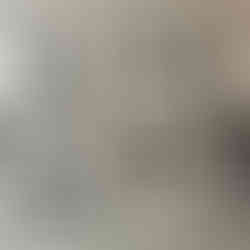The second in the series is on the art (and it is an art!) of hanging your pictures and curating the whole collection. I would imagine you know you can’t frame pictures yourself, but think that you are a dab hand at hanging? Think again it is, as I have discovered, rather more complicated than one might imagine. Almost everyone we know uses the Peter Haslam-Fox at Hangman, https://www.hang-man.co.uk
And set out on our website are the ten rules of picture hanging. www.pluperfectpresents.com Check it out, it is really helpful, even if you are going to do it yourself!!
TEN TOP TIPS FOR HANGING YOUR ART COLLECTION
By Peter Haslam-Fox of Hangman
1. Start from scratch. Take everything off the walls and fill in the holes left by the old fittings. Every picture has its correct height and it’s best to avoid the temptation of thinking old screws or pins might, coincidently, be just right. They won’t!
2. Consider first your collection in its entirety. Often groups can be best formed on the ground where stuff can be easily moved. You don’t need to stick to these groups and I would advise being adaptable, but certainly you can spot where one really doesn’t sit well with another and keep them apart.
3. Bear in mind it isn’t simply a matter of matching colours, tones, themes and mediums. Often an unexpectedly different piece can really bring the best out in its neighbour. Equally, two similar works can often distract from one another. Like most things, there are not rules which are worth blindly sticking to, you are far better advised to trust your instincts. If it looks right, it is right.
4. There is one rule which is worth sticking to. When you start your hang, always start with the largest pieces. They are by definition the hardest to place and once the best spot for them has been found, they will dictate the way forward.
5. On fireplaces! It is all too common immediately to place your key, or largest, work above the fireplace. But the space above the fireplace is always raised. So when you consider the middle line of your pictures, the bigger or stronger the work above the fireplace, the more it serves to make everything else look hopelessly low. By all means put something you love up there but it does not need to be huge.
6. On corners! By contrast, works in corners can take the eye to the furthest point of a space, and can make that space feel bigger. Whilst more often than not, you can hang them at a sensible height linked to the other works in the room.
7. On long walls! Every house has them. They are the walls that link spaces. Sidewalls, corridors, and staircases need more than three pieces to address them properly. Sets of pictures or prints are useful for some of these spaces and can bridge gaps between more significant works as well as take your eye to them. Consider too furniture and mirrors to help break up long awkward spaces. Equally, if you don’t have something that works, you don’t have to fill the void. Don’t be afraid of blanks, they can be as important as their opposite. They should be considered as breathing spaces.
8. On height! The correct height can depend on height and the function of a room. From the floor to the middle of a picture should ideally be from 150 to 160 centimetres. You can lower this for more intimate spaces like bedrooms and heighten them for corridors to create scale.
9. On furnishings and architecture! Your pictures must be coordinated with an understanding of these two features. They can help each other. A piece of furniture can make an artwork look wonderful and equally, artwork can anchor a piece of furniture.
10. On Asymmetry! Whilst symmetrical placement of art is hard to beat in some spaces, balance is more vital and can be achieved in numerous ways, often most satisfactorily when not symmetrical.


Comments